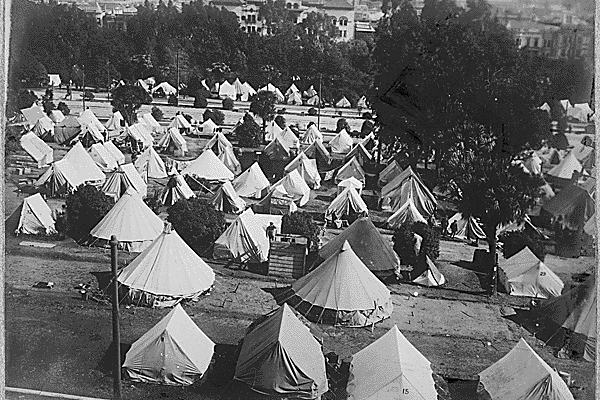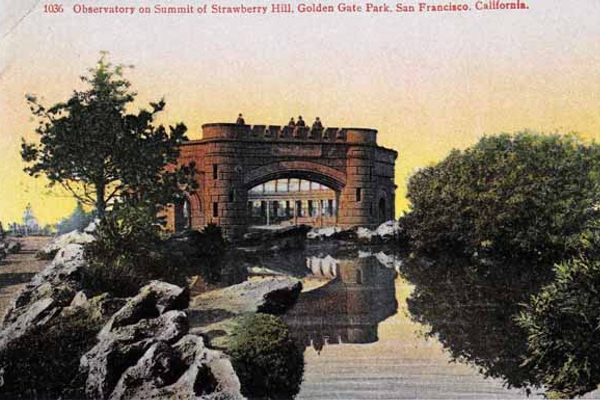Site of the Golden Gate Speed Road
Once the site of speeding horses, now home to picnickers and public concerts.
The pastoral vision of Golden Gate Park’s original designers incorporated miles of winding paths, perfect for quiet contemplation or a languid stroll. But some big names in San Francisco looked at the park’s wide open spaces and saw the perfect place for something else - break-neck horse racing.
Golden Gate Park is a complete fabrication - a lush landscape imposed on a sea of sand dunes in the 1870s. The original plans for the park intended for people to explore slowly, on foot or on horseback. The speed limit for horses in the park was only ten miles an hour - nowhere near fast enough for the upper class gentlemen of San Francisco, where horse racing was a social event for the elite to see and be seen at, and naturally to bet on whose horse was the fastest.
Decades of red tape ($35,000 to fund construction and two groundskeepers, all to be raised privately) was intended to dissuade the affluent equestrian class from changing the character of the park. However in 1894 the new “Speed Road” was completed and opened for use, thanks to the deep pockets of local titans of industry including Leland Stanford, Adolf Sutro, Adolph Bernard Spreckels, and Charles Crocker. Just over one mile in length, the curved straightaway was divided for racing in both directions, and graded and paved with clay. At the outset it was a beauty, and must have been a lovely place.
Sadly, Speed Road didn’t last long, as the horse owners who petitioned for the track to be built soon forgot that they were responsible for maintenance, and it quickly fell into disrepair.
Beginning in 1904 the polo field was constructed nearly in the middle of Speed Road. Hardly any polo matches happen here these days, where it is more common to see a soccer or football game between local high school teams. The region around old Speed Road and the polo field is still the home of SF Equestrian pursuits, with the Golden Gate Equestrian Center just to the north and the Bercut Equitation Field to the west of the Polo Field.
The end of the Speed Road came with the Earthquake of 1906, when temporary refugee camps were erected in Golden Gate Park. “Camp Speedway” aka “Camp Six” housed approximately one thousand displaced San Franciscans alone. The encampment slowed construction on the polo field, and all but obliterated the Speed Road.
Recently, Speedway Meadows was renamed Hellman Hollow in tribute to the late Warren Hellman. Hellman was the financier behind the free, and incredibly popular annual “Hardly Strictly Bluegrass Festival.” This festival brings in music lovers of all types from all over to Golden Gate Park. It is no small event, and features some of the biggest and best names in (mostly, but not always) American music.
Entertainingly, in the long run the bicycle ended up having a greater ultimate impact on the park than horses. A path was originally built for bicycle use along what would eventually become Kennedy Drive, one of the busiest thoroughfares in Golden Gate Park. The irony gets thicker, in that the remnants of the old Speed Road are by now mostly re-purposed into San Francisco Bicycle Path 830.
Regardless, the conspicuously open straight path through the planted trees is still a visual clue to the former path of Speed Road. With a little imagination, it is not hard to imagine the adrenaline fueled races that once charged through its center.


















Follow us on Twitter to get the latest on the world's hidden wonders.
Like us on Facebook to get the latest on the world's hidden wonders.
Follow us on Twitter Like us on Facebook